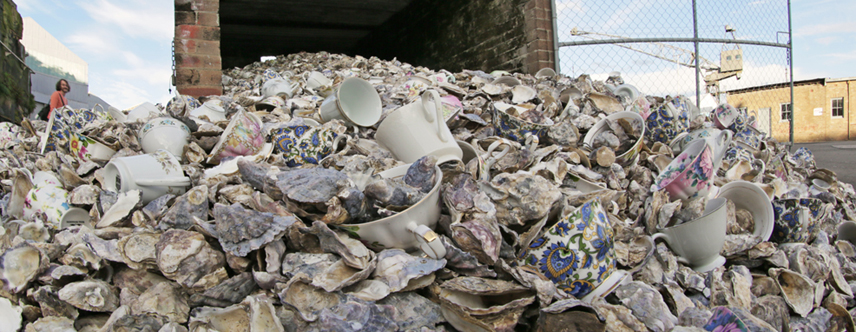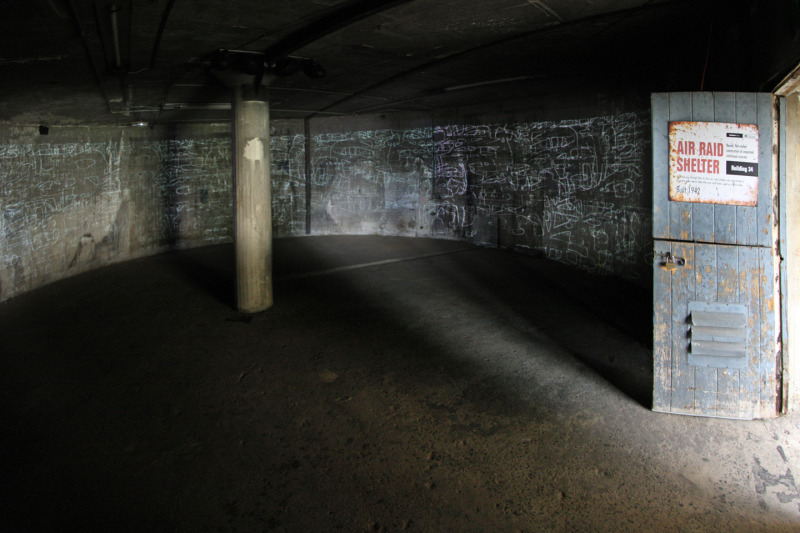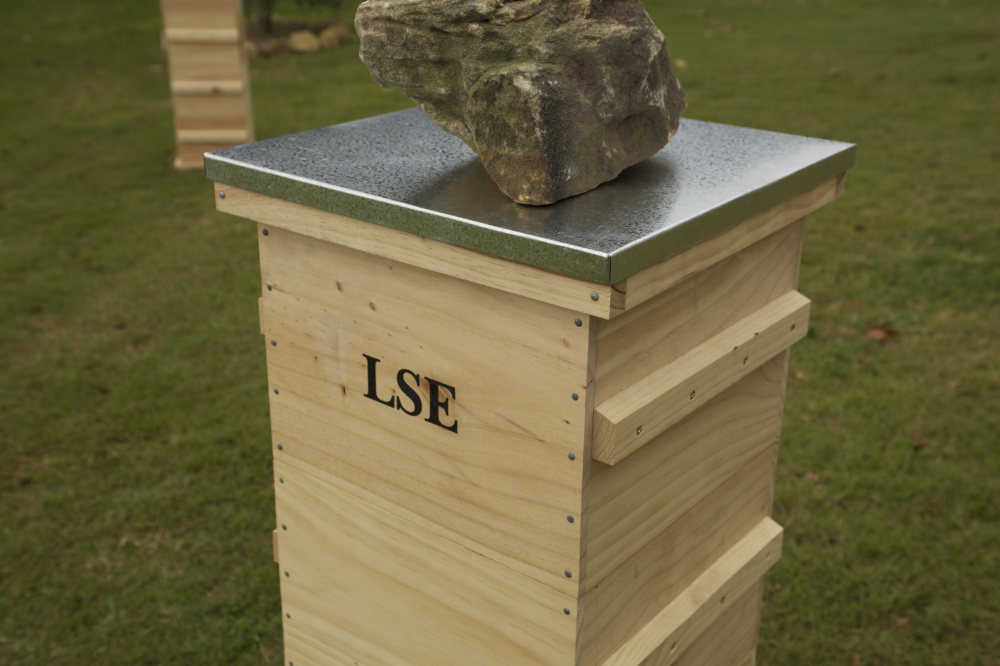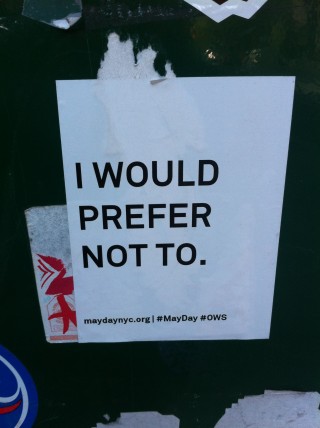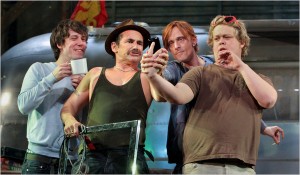Today to Cockatoo Island: penal colony within the convict colony, industrial reformatory, factory, shipyard, UNESCO World Heritage site and now a venue for the 18th Sydney Biennale. The extraordinary bricolage of colonial punishment, industrial production and knowledge economy cultural production makes for one of those slightly dizzying jet laggy experiences you have only while traveling.
My British forebears did know how and where to build prisons, you have to give them that. The island is isolated in the middle of Sydney harbor, with the prison itself located on top of a steep cliff. Recent excavations have uncovered minute solitary confinement cells, which have a distinctly contemporary look in this Abu Ghraib era. The officials built themselves sandstone residences with a Georgian feel but placed at the highest point to give them a panoptic viewpoint. Grain silos dug into the rock still have chain rings, to which the excavating prisoners were linked while working. The prison was created right at the end of the transportation era in 1849–convicts were not sent to New South Wales after 1850, although they went to Western Australia as late as 1868.
As has often been pointed out, these colonial punishments add a totally different complexion to the idea that European jurisprudence had moved from physical punishment to mental discipline by the early nineteenth century. My view has been that revolutionary action in Europe won workers there a certain (if limited) reprieve from punishment; but colonial punishment intensified in the later nineteenth century as imperialism abandoned all pretension of colonial self-government in favor of direct rule from the metropole. That did not preclude the disciplinary formation of colonized subjects, as the reformatories attest.
In 2000, a group of Aboriginal people occupied the island and claimed it as sovereign territory. You can still see their murals, using the Aboriginal flag as a motif. Using the colonial doctrine of terra nullius, Isabell Coe and others asserted that Britain had never formally claimed the island, a claim rejected by the courts as “inconceivable.” Really? A deserted island on the edge of the harbor? Regardless, Coe created a tent embassy on the island and asserted sovereignty. The occupation of occupied indigenous land and the counterclaim to sovereignty was a powerful performative act.
This, then, is no ordinary post-industrial site to hold an art exhibition. The artists whose work was shown here seemed to be aware of the challenges and many rose to the occasion. I liked Jonathan Jones’s simple approach:
Jones mixed typically British crockery with sea-shells that might be found in an Aboriginal midden in what is now New South Wales. The intermingling is simple but effective.
A more complex approach was taken by Lebanese artist Khaled Sabsabi in his installation “Nonabel.” You enter a darkened air-raid shelter and see the reflection of a young boy in water projected onto the circular walls. All of a sudden, the image changes dramatically and a montage of Arabic calligraphy and sound installation made me jump, although the phrase being used in the piece apparently means: “if you destroy the image of violence, it will disappear.”
Finally Alec Finlay brought the location of imperial domination up to date with his sound and sculpture installation. To quote his description:
Finlay takes the fluctuations of the stock market and represents them as the ‘buzz’ of Australian honey-bees (recorded by sound-artist Chris Watson), broadcast from 10 multi-storied wooden hives. Each hive stack bears the acronym of a major stock exchange – New York, Toronto, Sao Paulo, London, Frankfurt, Mumbai, Shanghai, Hong Kong, Tokyo, and Sydney – and produces a stream of audio, a buzzing that varies in density and volume in accordance with economic activity.
It was a remarkable sound, rising and falling with the market activity.
What made it all the more powerful–although I suspect unintentionally–was that I came upon this piece in the Convict Precinct, just after reading a sign placed by the Sydney Harbor Trust. It described how, when the prison was first established, the prisoners were confined in wooden boxes at night. Is this what the favorite corporate slogan “thinking outside the box” actually means? That if you don’t produce useful ideas, we’ll put you in a box? Bees are said to form colonies. Others describe them as democracies or societies. Finlay also makes nests for “unproductive” wild bees out of books about bees. It’s layered symbolism like this that does important imaginative work, as we would do well to remember in our messaging and imaging in directly political contexts.

